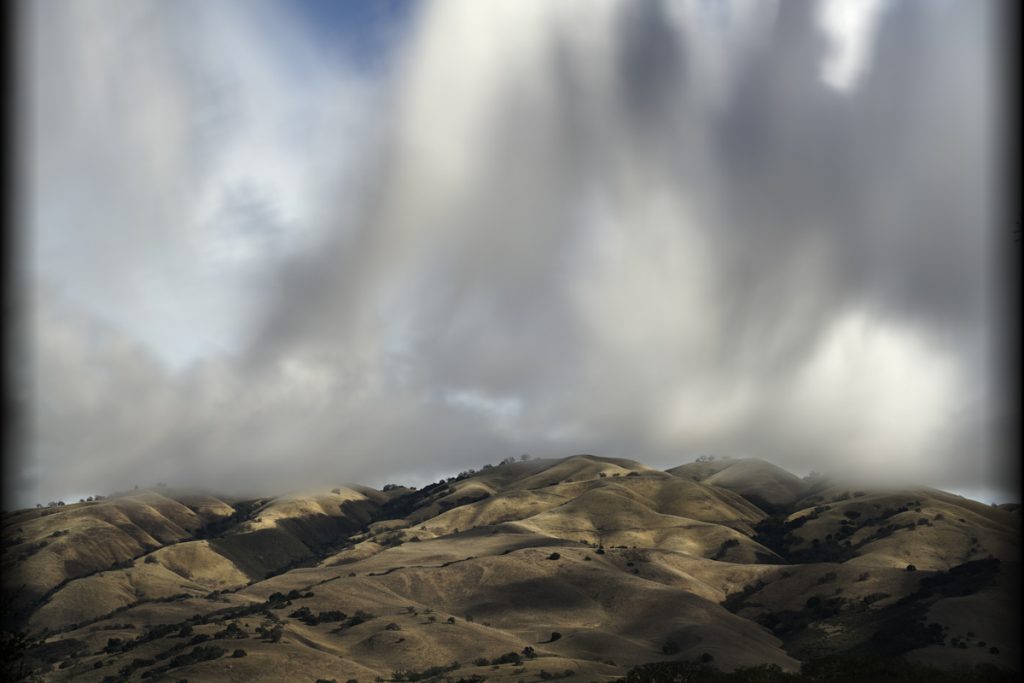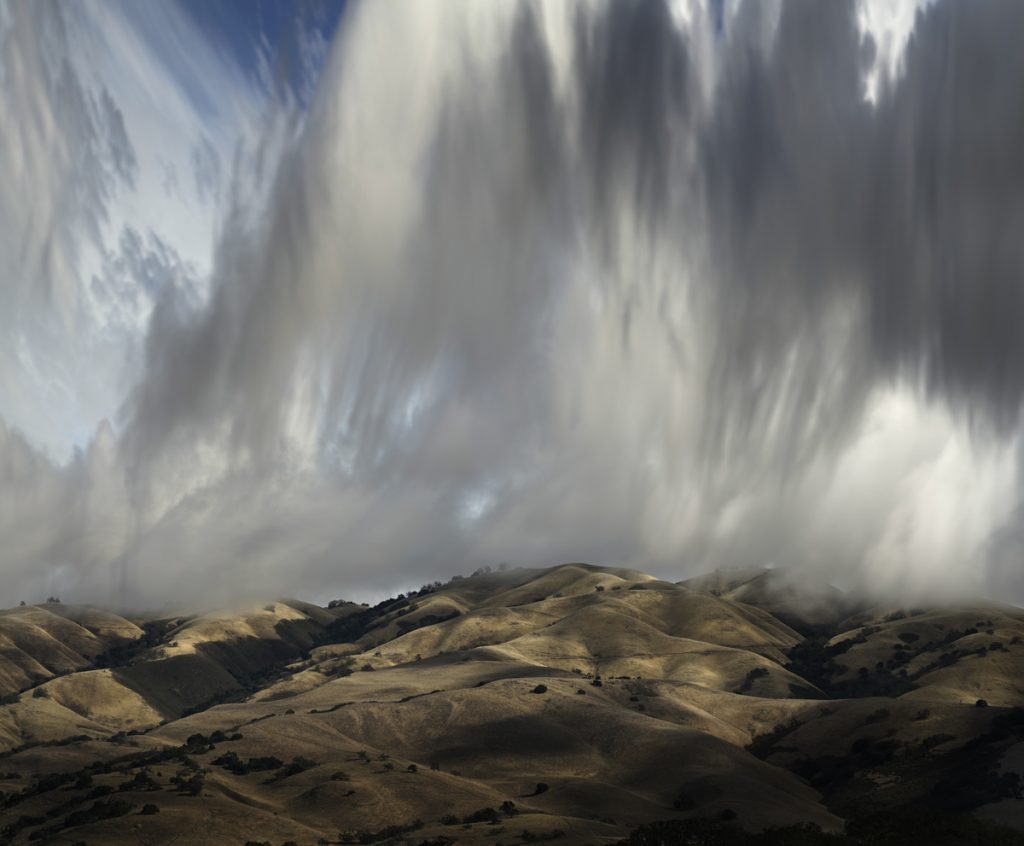This post is part of a series about some experiments I’m doing combining space and time in slit scan photographs. The series starts here.
Sometimes with the slit scan images that I’m doing, the pattern of cloud shadows on the hills changes very rapidly, creating vertical striping patterns that are visually odd (in a bad way, not odd in a good way like the rest of the image) and distracting.
Here’s an example, with a 22-pixel wide slit, moved in 2-pixel increments with each new exposure:
Look in the lower left corner. See the stripes?
One way to reduce the striping is to make the slit wider. Here are the same exposures processed with a 202-pixel-wide slit:
Ignore the gradients on the left and right. They are the width of the slit, and are the result of the way I wrote the code. I can probably figure out a way to make them go away, but for now I’m cropping.
Well, the stripes are pretty much gone, but the clouds are way too soft. As I said in yesterday’s post, making the slit wider doesn’t affect the sharpness of static objects, so the trees and hills are sharp.
What to do? Let’s use a little of each one, and do some cropping and burning-in:
That’s pretty nice, I think. I’ll be using this technique going forward.
As a side benefit, the non-pattern read noise and the photon noise in the hills is now down by the square root of 202 over that of a single exposure. That’s a factor of more than 14.



If it would be consistent with your approach , perhaps you could make a composite with the clouds from the slit scan, and the ground from a single image?
But I claim no expertise or significant experience with PS masking.
This is a lot better, because the time matches top to bottom, and I get the noise reduction, too.
I really liked the striping.